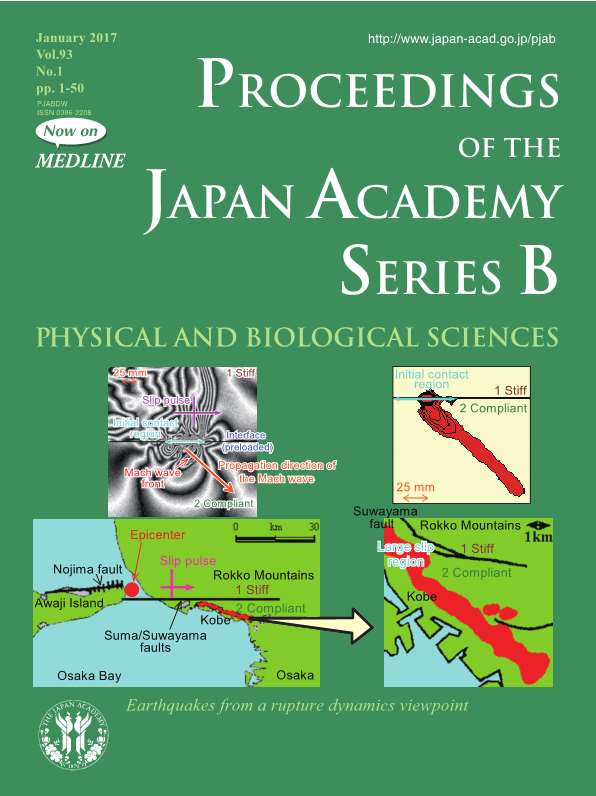
- |<
- <
- 1
- >
- >|
-
Shaw WATANABE2017Volume 93Issue 1 Pages 1-9
Published: January 11, 2017
Released on J-STAGE: January 11, 2017
JOURNAL FREE ACCESS FULL-TEXT HTMLThe prevalence of chronic kidney disease (CKD) is estimated to be 8–16% worldwide, and it is increasing. CKD is a risk factor for heart attack and stroke, and it can progress to kidney failure requiring dialysis or transplantation. Recently, diabetic nephropathy has become the most common cause of CKD. In Japan, the cumulative probability of requiring hemodialysis by the age 80 years is 1/50 in males and 1/100 in females. The number of patients under hemodialysis in Japan exceeded 320,000 in 2014, among which 38,000 were newcomers and 27,000 died.
The annual medical costs of hemodialysis are 1.25 trillion yen in Japan, representing 4% of the total national medical expenditures in 2014. A low-protein diet (less than 0.5 g/kg b.wt.) is a very effective intervention. Low-protein rice (1/10 to 1/25 of the normal protein contents) is helpful to control the consumption of proteins, decreasing at the same time the intake of potassium and phosphate.
Protein restriction is indicated as soon as the eGFR becomes lower than 60 ml/min/1.73 m2 body surface, in order, to slow disease progression. The newly developed low-protein Indica rice is expected to help many CKD patients in China and Southeast Asia.
View full abstractDownload PDF (1079K) Full view HTML -
Chiaki NISHIMURA2017Volume 93Issue 1 Pages 10-27
Published: January 11, 2017
Released on J-STAGE: January 11, 2017
JOURNAL FREE ACCESS FULL-TEXT HTMLThe structures of apomyoglobin folding intermediates have been widely analyzed using physical chemistry methods including fluorescence, circular dichroism, small angle X-ray scattering, NMR, mass spectrometry, and rapid mixing. So far, at least two intermediates (on sub-millisecond- and millisecond-scales) have been demonstrated for apomyoglobin folding. The combination of pH-pulse labeling and NMR is a useful tool for analyzing the kinetic intermediates at the atomic level. Its use has revealed that the latter-phase kinetic intermediate of apomyoglobin (6 ms) was composed of helices A, B, G and H, whereas the equilibrium intermediate, called the pH 4 molten-globule intermediate, was composed mainly of helices A, G and H. The improved strategy for the analysis of the kinetic intermediate was developed to include (1) the dimethyl sulfoxide method, (2) data processing with the various labeling times, and (3) a new in-house mixer. Particularly, the rapid mixing revealed that helices A and G were significantly more protected at the earlier stage (400 µs) of the intermediate (former-phase intermediate) than the other helices. Mutation studies, where each hydrophobic residue was replaced with an alanine in helices A, B, E, F, G and H, indicated that both non-native and native-like structures exist in the latter-phase folding intermediate. The N-terminal part of helix B is a weak point in the intermediate, and the docking of helix E residues to the core of the A, B, G and H helices was interrupted by a premature helix B, resulting in the accumulation of the intermediate composed of helices A, B, G and H. The prediction-based protein engineering produced important mutants: Helix F in a P88K/A90L/S92K/A94L mutant folded in the latter-phase intermediate, although helix F in the wild type does not fold even at the native state. Furthermore, in the L11G/W14G/A70L/G73W mutant, helix A did not fold but helix E did, which is similar to what was observed in the kinetic intermediate of apoleghemoglobin. Thus, this protein engineering resulted in a changed structure for the apomyoglobin folding intermediate.
View full abstractDownload PDF (9176K) Full view HTML -
Koji UENISHI2017Volume 93Issue 1 Pages 28-49
Published: January 11, 2017
Released on J-STAGE: January 11, 2017
JOURNAL FREE ACCESS FULL-TEXT HTMLNormally, an earthquake is considered as a phenomenon of wave energy radiation by rupture (fracture) of solid Earth. However, the physics of dynamic process around seismic sources, which may play a crucial role in the occurrence of earthquakes and generation of strong waves, has not been fully understood yet. Instead, much of former investigation in seismology evaluated earthquake characteristics in terms of kinematics that does not directly treat such dynamic aspects and usually excludes the influence of high-frequency wave components over 1 Hz. There are countless valuable research outcomes obtained through this kinematics-based approach, but “extraordinary” phenomena that are difficult to be explained by this conventional description have been found, for instance, on the occasion of the 1995 Hyogo-ken Nanbu, Japan, earthquake, and more detailed study on rupture and wave dynamics, namely, possible mechanical characteristics of (1) rupture development around seismic sources, (2) earthquake-induced structural failures and (3) wave interaction that connects rupture (1) and failures (2), would be indispensable.
View full abstractDownload PDF (6091K) Full view HTML
- |<
- <
- 1
- >
- >|